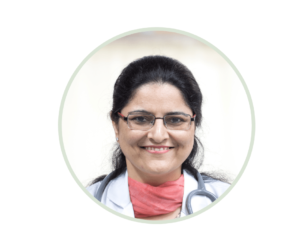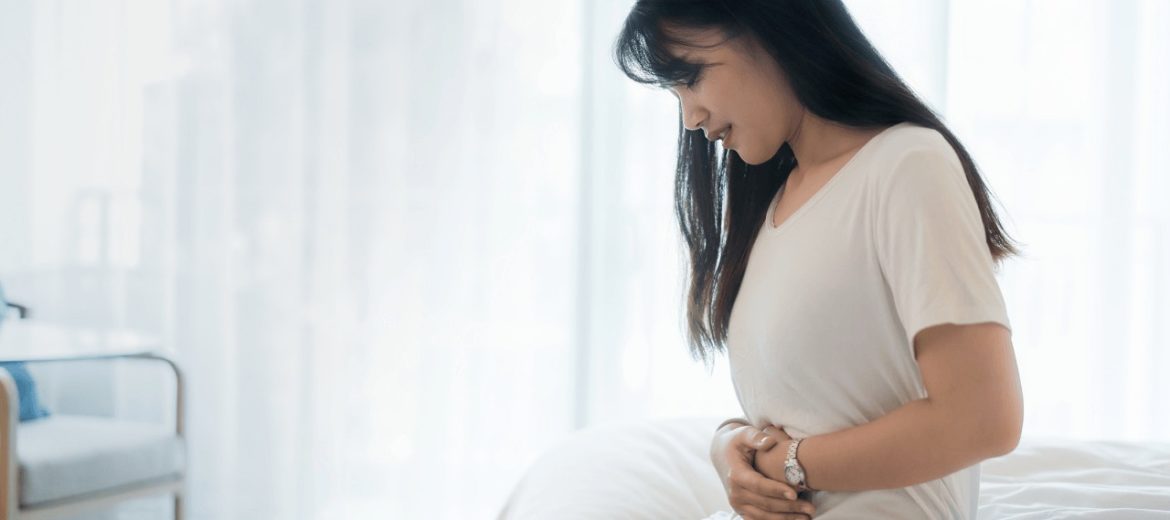How many times have your painful periods stopped you from attending school or play your favourite outdoor game?
Dysmenorrhoea or painful menstrual cramps is one of the most common gynecological problems women face. It is also the leading cause of repeated short term absence of young girls from schools.
According to a report by NCBI, almost 15% of adolescent girls suffer from dysmenorrhoea and in up to 20% of cases of dysmenorrhoea, period cramps are severe enough to disrupt a woman’s daily activities.
Harika Swaminathan, a 14-year old, was going through a similar situation.
She had her first period (menarche) when she was 12-years old but since the past few months, her period cramps started to become so painful that she was forced to miss school on the first two days of her periods every month.
“The period pain became so unbearable for me that I could think of nothing else but lying down on bed and sleeping. I had to miss my basketball practices every now and then during those days,” said a distressed Harika.
Harika’s mother was equally concerned seeing her daughter’s condition during periods. Thankfully, she was aware that such painful cramps aren’t something to ignore. She decided to consult Dr. Anita Sabherwal, Obstetrician and Gynecologist at Sitaram Bhartia Hospital for some medical relief.
During the initial consultation, Dr. Anita encouraged Harika to explain her symptoms in detail.
Dysmenorrhea symptoms – What does dysmenorrhea feel like?
“Most women experience some kind of pain during their menstruation. That doesn’t mean that every woman has dysmenorrhoea. But if that pain is so intense that it doesn’t allow you to work or do your daily activities at all, then you should seek medical help,” cautioned Dr. Anita.
Women with dysmenorrhoea present with the following symptoms –
- Severe and frequent menstrual cramps mostly in the lower abdomen. This pelvic pain can start before the onset of periods and continue for 1 to 3 days.
- Extreme pain that radiates down the legs and lower back.
- If pain is intense it is often associated with fatigue, headache, nausea and vomiting
- There may be associated complaints of breast tenderness, mood swings like irritability and anger.
Diagnosis
Apart from hearing Harika’s symptoms, Dr. Anita studied her medical history carefully and performed a physical examination. “In all probability there is nothing wrong with Harika and menstrual cramps are physiological due to hormones and chemicals released during menstruation.” Dr Anita. An ultrasound was advised to rule out other possibilities for dysmenorrhoea.
Ultrasound reports revealed a healthy uterus which confirmed Dr. Anita’s suspicion that what Harika was experiencing was primary dysmenorrhea.
Unaware of the condition, Harika’s mother asked, “why is my daughter having such severe menstrual cramps every time?”
Dysmenorrhoea causes – Why do girls get dysmenorrhea?
There are two types of painful periods a woman can experience –
- Primary dysmenorrhoea
- Secondary dysmenorrhoea
“Each of them has a different cause.”
Causes of primary dysmenorrhea
Primary dysmenorrhea is referred to the menstrual pain which occurs in the absence of any pelvic disease.
Let us understand the process of menstruation first to get this better. Each month one of the ovaries release an egg (the process is known as ovulation). The uterus prepares its walls for the fertilised egg by building a thick lining inside. But when fertilisation doesn’t take place, the egg along with the inner lining of the uterus sheds and is released from the vagina in the form of blood.
“The muscular wall of the uterus contracts during periods to encourage the shedding of the lining. These contractions result in the release of certain pain-triggering chemicals (eg prostaglandins),” explained Dr. Anita to Harika and her mother.That’s why you feel pain during your periods.
Primary dysmenorrhea, is therefore a functional pain in response to a natural process.
Causes of secondary dysmenorrhea
Secondary dysmenorrhea, on the other hand, is caused due to an underlying pelvic condition. These conditions can be –
1) Endometriosis: It’s a chronic pelvic disorder in which the cells that normally lining the uterus start growing outside the uterus in other pelvic organs like the fallopian tube and ovaries. As a result, the menstrual blood, instead of flowing out through the vagina, gets accumulated around the uterus and ovaries causing intense period pain.
2) Pelvic inflammatory disease: There is inflammation due to infection of the uterus, fallopian tubes and the ovaries leading to painful menstrual cramps.
3) Uterine fibroids: Fibroids are non-cancerous tumors that can grow in the uterus. These fibroids can make the periods heavy and painful.
4) Infection and polyps of cervix (mouth of uterus)
Harika’s mother was quite relieved that her daughter didn’t have any underlying pelvic condition causing those painful menstrual cramps. She was eager to discuss the best treatment option with Dr. Anita.
Dysmenorrhoea treatment – How do you treat dysmenorrhea?
Treatment for dysmenorrhoea in teenagers primarily focuses on medication and improving their quality of life.
“The treatment option that we will follow for Harika will be keeping in mind her age, her overall health and the extent and cause of her dysmenorrhoea,” Dr. Anita explained.
Medication and a few simple lifestyle changes can help manage dysmenorrhoea well.
The various treatment options are –
- Prostaglandins inhibitors, common painkillers – These help in reducing pain during menstruation by controlling the release of prostaglandins.
- Hormonal treatment: Birth control pills or oral contraceptive tablets also help in reducing the release of prostaglandins during menstruation. Hormonal therapy is a safe way to regulate a woman’s menstrual cycle and eliminate period pain in case of primary dysmenorrhoea.
Dr. Anita prescribed some prostaglandin inhibitors to reduce the intensity of menstrual cramps. She also encouraged Harika to go for her basketball practices and not leave physical activity at any cost.
Read: Exercise During Periods
“In case the period pain becomes too much, you can use a hot bag across your lower abdomen to manage the pain better. Hot showers also help at times.”
Thankfully, Harika was relieved of her extreme menstrual cramps after taking the prescribed medications. The tips the doctor gave her also helped in managing her period cramps better.
Soon after she was able to resume her basketball practice and was grateful to Dr. Anita for the valuable medical guidance.
This article has been written with Dr. Anita Sabherwal Anand, Consultant, Obstetrician-Gynecologist at Sitaram Bhartia Hospital in South Delhi. Dr. Anita is a highly qualified gynecologist with 20+ years of experience who is trusted by low-risk and high-risk mothers alike for her guidance on having a healthy pregnancy and delivery.

MBBS, Lady Hardinge Medical College, University of Delhi (1992); MD (Obstetrics & Gynaecology), Lady Hardinge Medical College, University of Delhi (1997); DNB Secondary (Obstetrics & Gynaecology), National Board of Medical Education, New Delhi (1999)
Come in for a consultation with Dr. Anita. Please call on +91 9871001458 for appointments.


